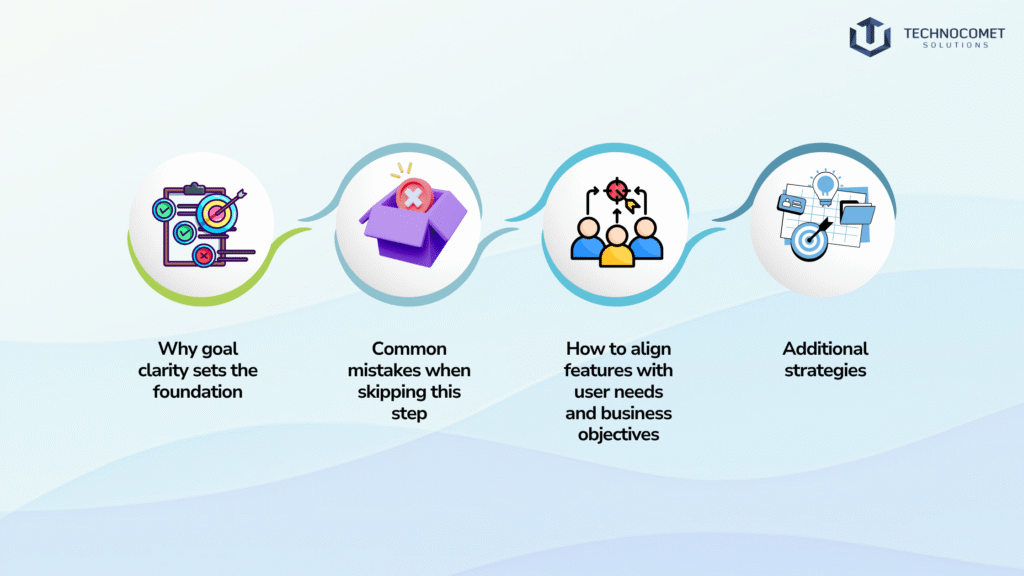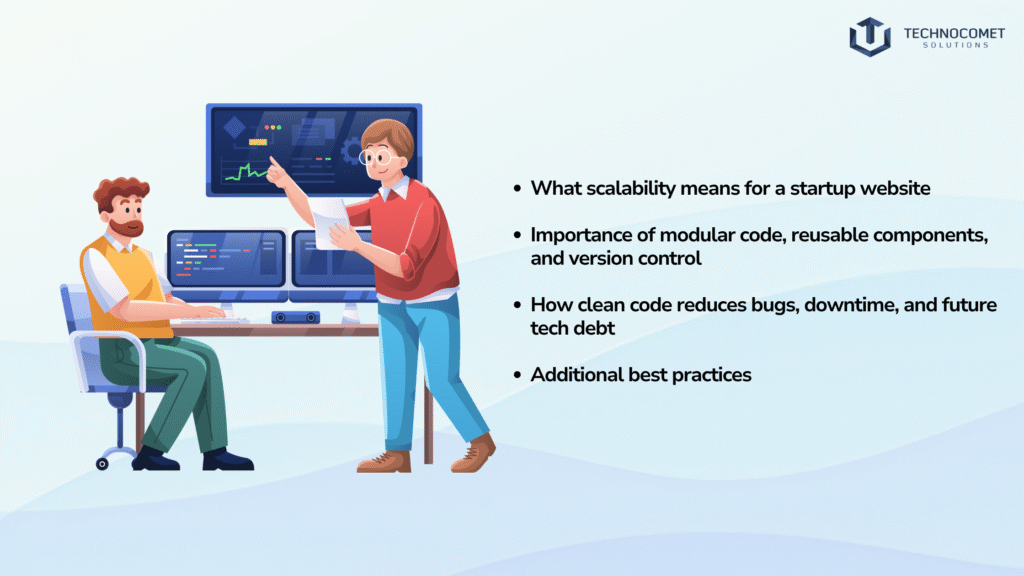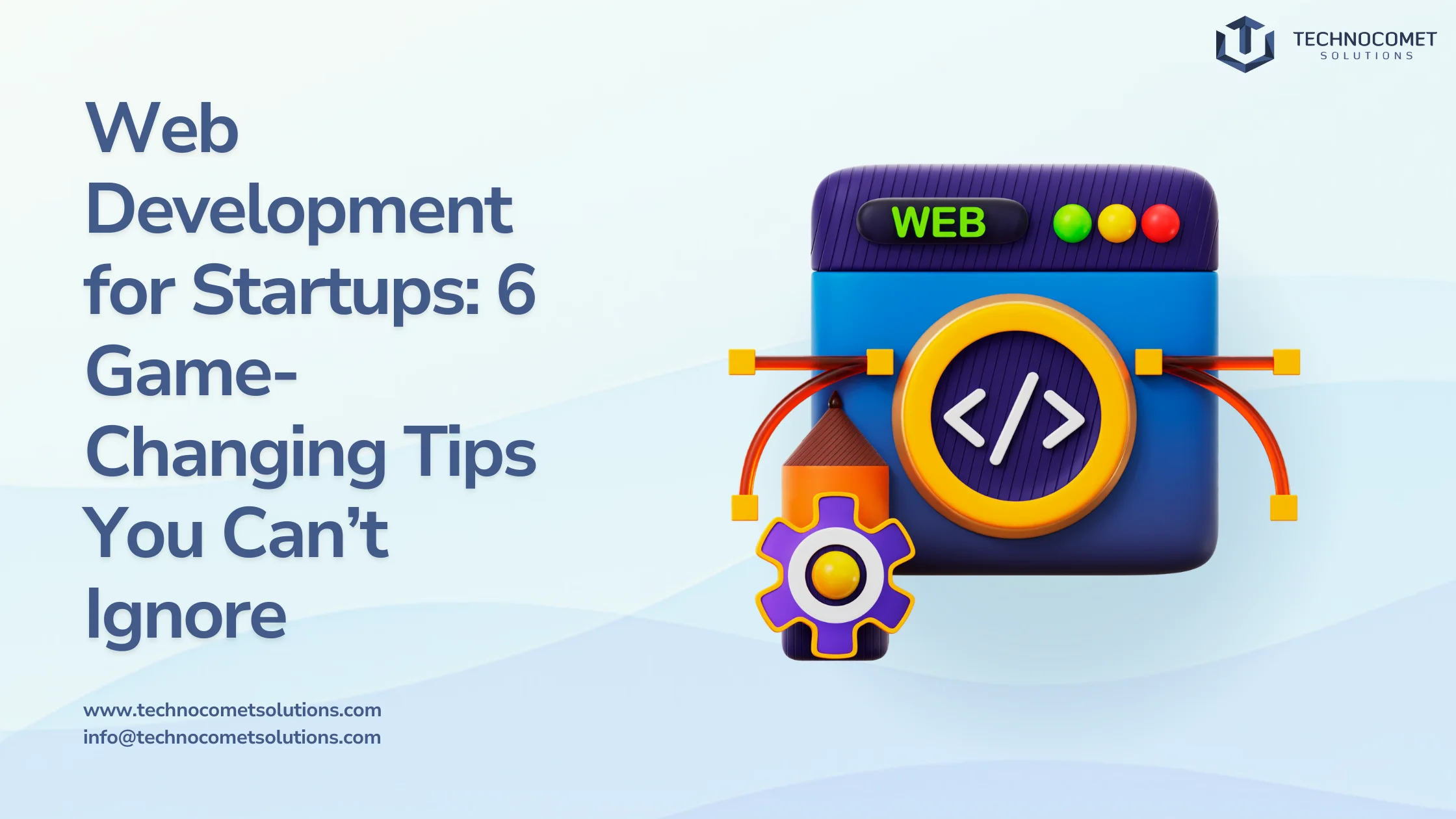Introduction
Have you ever felt overwhelmed trying to figure out the best way to build your startup’s website? It’s a common challenge; knowing where to start with web development for startups can feel like navigating a maze without a map. You want a site that not only looks great but also drives growth, attracts customers, and scales with your business. The good news is, with the right approach, you can avoid costly mistakes and set yourself up for success from the very beginning.
In this blog, we’ll explore six game-changing tips that every startup founder should know about web development for startups. You’ll learn how to define clear goals, pick the right technology stack, prioritize mobile-first design, integrate SEO early on, build scalable architecture, and choose the perfect development partner. Think of this as your friendly guide to launching smarter and scaling faster, without the usual headaches.
So, let’s dive in and unlock the secrets to effective web development for startups. Ready to get started? Partner with Technocomet Solutions and turn your startup’s digital vision into reality.
✅ Why Web Development Is a Critical Early Decision for Every Startup's Success
In today’s digital-first world, web development for startups is not just a technical step; it’s a strategic move that can define your brand’s trajectory. A well-crafted website is often the first impression your startup makes, shaping how customers, investors, and partners perceive your business. Without a robust online presence, startups risk missing out on growth opportunities, credibility, and valuable customer insights.
- Over 71% of businesses now have a website, highlighting its role in establishing legitimacy and trust.
- Companies with a strong web presence grow 40% faster than those without one.
- A professional website is often seen as a hallmark of credibility, with 75% of users judging a business by its site design.
✅ How the Right Development Approach Can Save Time, Money, and Effort Down the Road
Choosing the right approach to web development for startups can be a game-changer. Startups operate with limited resources and tight timelines, so making smart development choices early on prevents costly mistakes and technical debt as you scale.
- Rapid product development and iteration are possible with the right web development skills, helping startups adapt quickly to market needs.
- Investing in scalable, user-friendly platforms reduces the need for expensive redesigns and minimizes downtime as your business grows.
- Responsive and fast-loading websites not only boost user satisfaction but also increase conversion rates and reduce bounce rates.
✅ A Sneak Peek at 6 Powerful, Startup-Friendly Tips to Launch Smarter and Scale Faster
To help you navigate the complexities of web development for startups, we’ve distilled the process into six actionable tips. These insights are designed to help you launch efficiently, avoid common pitfalls, and build a digital foundation that supports long-term growth.
- Define clear goals before you write a single line of code.
- Choose a tech stack that supports both your MVP and future scaling.
- Prioritize mobile-first and responsive design for maximum reach.
- Integrate SEO best practices from the very beginning.
- Focus on scalable architecture and clean, maintainable code.
- Partner with the right web development experts who understand startup needs.
By following these proven strategies, you’ll set your startup on the path to digital success with web development for startups as your launchpad.

✨ Define Clear Goals Before Writing a Line of Code
Goal clarity is the foundation of successful web development for startups. Without it, you risk building a website that looks impressive but fails to deliver business value.
✅ Why goal clarity sets the foundation:
- Ensures every feature and page serves a purpose, directly supporting your startup’s mission and KPIs.
- Keeps your team focused, aligned, and efficient, reducing wasted time and resources.
- Makes it easier to measure progress and pivot quickly based on real user feedback.
✅ Common mistakes when skipping this step:
- Building features based on assumptions rather than validated needs.
- Overcomplicating the site with unnecessary bells and whistles.
- Launching with a website that doesn’t address your core audience or business objectives.
✅ How to align features with user needs and business objectives:
- Identify your primary target audience and the problems your product solves for them.
- Prioritize must-have features for your MVP (Minimum Viable Product) and leave room for iteration.
- Map out clear user journeys, ensuring every element of your web development for startups supports conversion and engagement.
✅ Additional strategies:
- Use customer interviews, surveys, and competitor analysis to validate your assumptions.
- Collaborate with stakeholders to define what success looks like for your website.
- Document your goals and revisit them regularly as your startup evolves.
💡 Pro Tip:
Set SMART (Specific, Measurable, Achievable, Relevant, Time-bound) goals from day one. For example, “Increase qualified leads by 30% in the next quarter” is a clear, actionable target that guides your web development for startups.
✨ Choose the Right Tech Stack for Long-Term Success
Your technology stack is the backbone of web development for startups. The right choices here can accelerate your launch, support future growth, and reduce long-term costs.
✅ Understanding front-end and back-end options:
- Front-end: Frameworks like React, Vue.js, or Angular offer speed and flexibility for building interactive user interfaces.
- Back-end: Node.js, Laravel, Django, and Ruby on Rails are popular for their scalability, security, and strong developer communities.
- Database: PostgreSQL, MongoDB, and MySQL are robust options for storing and managing your data.
✅ Comparing popular stacks:
- MERN (MongoDB, Express, React, Node.js): Great for full JavaScript development and rapid prototyping.
- MEAN (MongoDB, Express, Angular, Node.js): Suited for enterprise-grade apps and real-time features.
- WordPress: Ideal for content-driven sites, quick MVPs, and founders with limited technical resources.
✅ How your tech stack affects your startup:
- Influences website speed, security, and scalability.
- Determines how easily you can add features, onboard developers, or integrate with third-party tools.
- Impacts hosting, deployment, and long-term maintenance costs.
✅ Additional considerations:
- Choose cloud hosting solutions like AWS or DigitalOcean for scalability and reliability.
- Use Docker for containerization to simplify deployment and ensure consistency across environments.
- Consider future integrations, analytics, and automation needs when selecting your stack.
💡 Pro Tip:
Don’t just pick what’s trendy. Select a tech stack that matches your team’s expertise and can evolve with your business. This forward-thinking approach to web development for startups sets you up for long-term success.
✨ Prioritize Mobile-First & Responsive Design
Mobile-first web development for startups is no longer optional; it’s essential. Most users will interact with your site on their phones, and search engines now prioritize mobile-friendly websites.
✅ Why mobile-first design is non-negotiable:
- Over 60% of global web traffic comes from mobile devices, and this number keeps rising.
- Google’s mobile-first indexing means your site’s mobile version determines your search rankings.
- A seamless mobile experience increases engagement, lowers bounce rates, and drives conversions.
✅ Responsive vs. adaptive design:
- Responsive design: Your site automatically adjusts to any screen size, offering consistency and usability for all users.
- Adaptive design: Uses multiple fixed layouts for specific devices, which can be resource-intensive for startups.
✅ Tools and frameworks for mobile excellence:
- Bootstrap, Tailwind CSS, and Material-UI provide fast, responsive layouts and design systems.
- Google Lighthouse and BrowserStack help you audit and test real-world mobile performance.
✅ Best practices for mobile-first web development for startups:
- Prioritize speed, optimize images, minimize code, and use lazy loading.
- Design with touch interactions in mind (larger buttons, clear calls to action).
- Ensure content is readable and accessible on all devices.
✅ Additional tips:
- Continuously test your site on a range of real devices and browsers, not just emulators.
- Use analytics to monitor mobile user behavior and identify areas for improvement.
💡 Pro Tip:
Always test your website on actual smartphones and tablets. Real-world testing is crucial for web development for startups aiming to deliver a flawless mobile experience.
✨ Don’t Ignore SEO from the Start
SEO is a cornerstone of web development for startups. It’s not just about keywords; it’s about building a site that’s discoverable, fast, and user-friendly from day one.
✅ Why web development and SEO must go hand-in-hand:
- SEO drives organic traffic, reducing your reliance on paid ads and lowering customer acquisition costs.
- Early SEO integration prevents costly technical fixes and missed opportunities down the line.
✅ Key SEO practices developers should implement early:
- Optimize site speed by compressing images, minifying code, and leveraging browser caching.
- Create a logical site structure with clear navigation, internal linking, and descriptive URLs.
- Use meta tags, alt attributes, and schema markup to improve search visibility and accessibility.
✅ How poor SEO decisions can cost you:
- Lower search rankings mean fewer visitors and less brand exposure.
- Poor site structure or slow load times lead to higher bounce rates and lost conversions.
✅ Additional strategies:
- Target high-intent, low-competition keywords relevant to your niche and audience.
- Implement dynamic content and personalization to boost engagement and SEO performance.
- Regularly update your content and optimize for featured snippets and voice search.
💡 Pro Tip:
Build your site with both users and search engines in mind. A holistic approach to web development for startups maximizes visibility and user satisfaction.

✨ Focus on Scalable Architecture and Clean Code
Scalability and clean code are critical for sustainable web development for startups. As your business grows, your website must handle increased traffic, new features, and evolving requirements without breaking down.
✅ What scalability means for a startup website:
- The ability to add new features, handle more users, and manage larger data volumes with minimal disruption.
- Flexibility to pivot or expand as your business model evolves.
✅ Importance of modular code, reusable components, and version control:
- Modular code allows for easier updates and bug fixes.
- Reusable components speed up development and maintain consistency across your site.
- Version control (like Git) keeps your codebase organized and enables collaboration among developers.
✅ How clean code reduces bugs, downtime, and future tech debt:
- Fewer bugs and faster troubleshooting.
- Easier onboarding for new developers.
- Lower maintenance costs and faster iteration cycles.
✅ Additional best practices:
- Use automated testing and continuous integration tools to catch issues early.
- Document your code and maintain a clear coding standard across your team.
- Plan for scalability from the start by using cloud infrastructure and microservices where appropriate.
💡 Pro Tip:
Start with Git and clean coding practices from day one. This proactive approach to web development for startups saves time, money, and stress as you scale.
✨ Work with the Right Web Development Partner
The right partner can make or break your web development for startups journey. Whether hiring in-house or outsourcing, collaboration and expertise are key.
✅ Why choosing an experienced development company is a game-changer:
- Experienced partners bring proven processes, avoid common startup mistakes, and accelerate your time-to-market.
- They understand the unique challenges of web development for startups, such as rapid iteration and lean budgets.
✅ Key qualities to look for:
- Transparent communication and regular progress updates.
- Experience working with early-stage companies and understanding startup dynamics.
- Agility and flexibility to adapt as your needs change.
✅ Benefits of hiring versus outsourcing:
- In-house teams offer more control and faster communication but require higher upfront investment.
- Outsourcing gives you access to specialized skills and scalability without long-term commitments.
✅ Additional tips:
- Look for a partner who offers post-launch support, ongoing optimization, and strategic guidance.
- Prioritize cultural fit and shared values to foster a collaborative, long-term relationship.
💡 Pro Tip:
Your web development partner should feel like an extension of your team, not just a vendor. Open communication and shared goals are essential for successful web development for startups.
📌 TechnoComet Solutions specializes in web development for startups, delivering scalable, smart, and startup-ready websites from idea to execution.
Conclusion
Investing in web development for startups is investing in your future. The right foundation will help you attract users, impress investors, and scale your vision with confidence. In the competitive world of startups, effective web development is more than just creating a website; it’s about building a strategic asset that drives growth, engages customers, and supports your business goals. By defining clear objectives, selecting the right technology stack, prioritizing mobile-first design, embedding SEO best practices early, and focusing on scalable, clean code, startups can create a strong digital foundation.
Every startup’s journey is unique, but the common thread is the need for a website that is fast, responsive, and optimized for search engines. Investing in web development for startups with scalability and maintainability in mind reduces future costs and technical debt, allowing founders to focus on innovation and customer satisfaction.
Ready to turn your startup vision into a powerful online presence? TechnoComet Solutions specializes in web development for startups, delivering scalable, smart, and startup-ready websites customized to your unique needs. Don’t let your web development hold you back; partner with TechnoComet Solutions today and launch your digital journey with confidence.
Reach out to TechnoComet Solutions today! 🚀💡📌
FAQs
The web development process for startups typically involves five key steps: clarifying goals and requirements, selecting the right tech stack, designing the user experience (UX), developing a Minimum Viable Product (MVP), and continuous testing and iteration.
Choosing the right tech stack depends on your startup’s goals, team expertise, and scalability needs. Popular options include Vue.js or React for front-end development, Laravel or Node.js for the back-end, and PostgreSQL or MongoDB for databases.
Mobile-first design ensures your website provides an optimal experience on smartphones and tablets, which account for the majority of web traffic today. Google also prioritizes mobile-friendly sites in search rankings.
Integrating SEO early in web development involves optimizing site speed, using clear site structures and URLs, adding relevant meta tags and alt text, and ensuring mobile-friendliness.
An experienced web development partner brings expertise in agile methodologies, scalable architecture, and user-centered design customized to startups’ unique needs.







